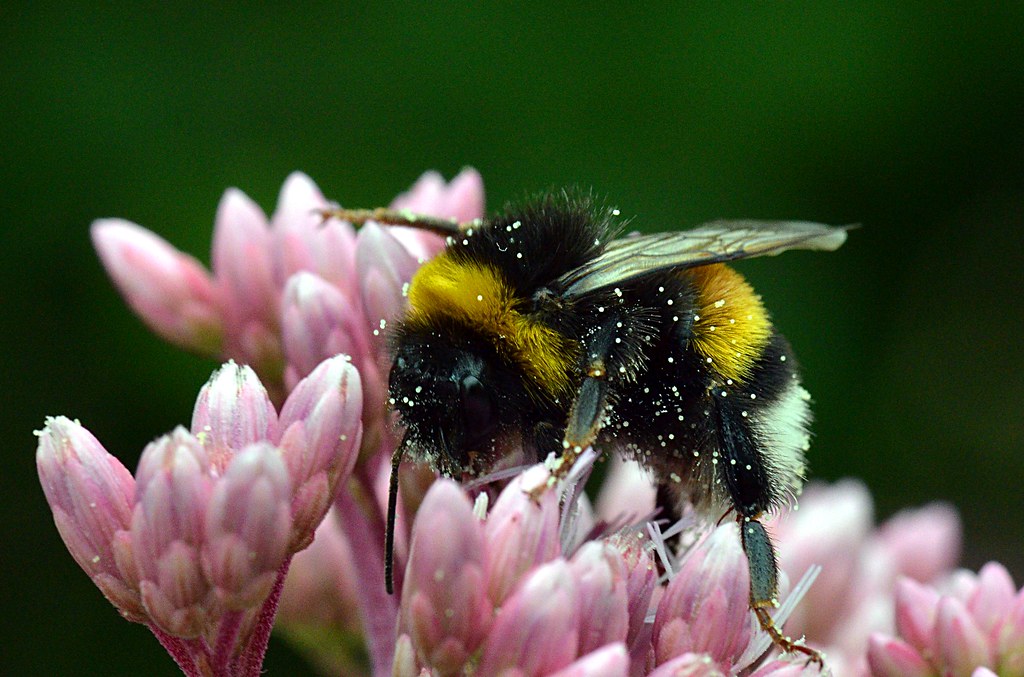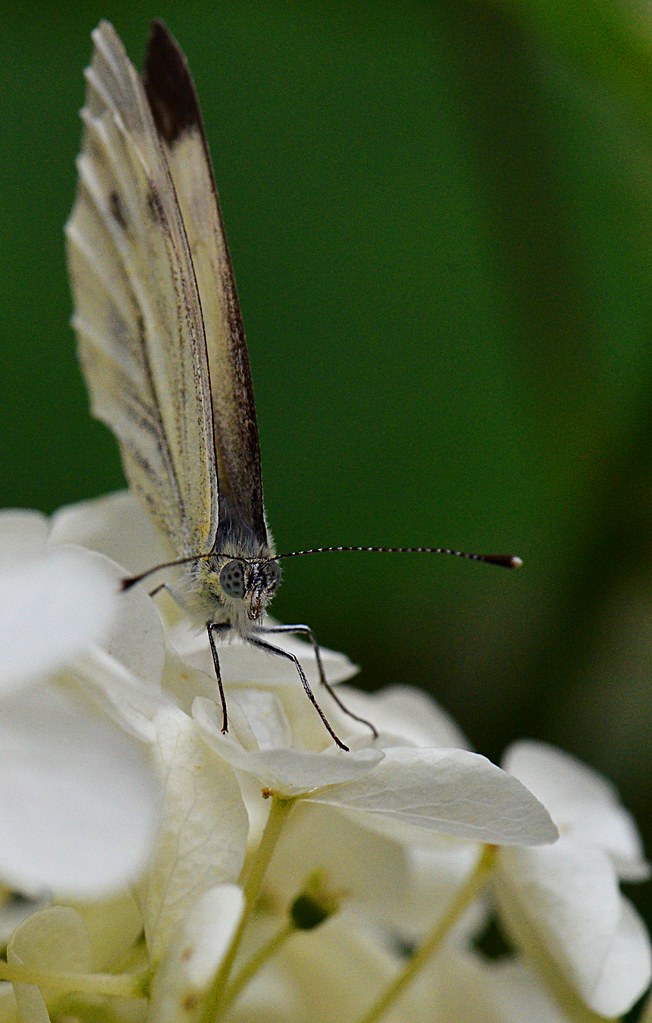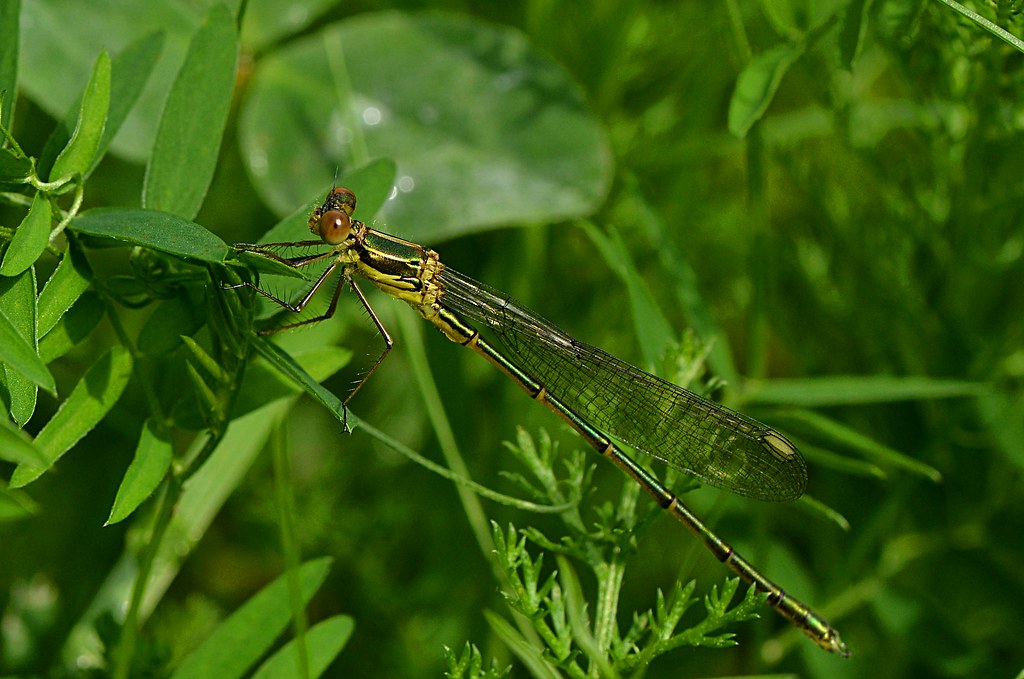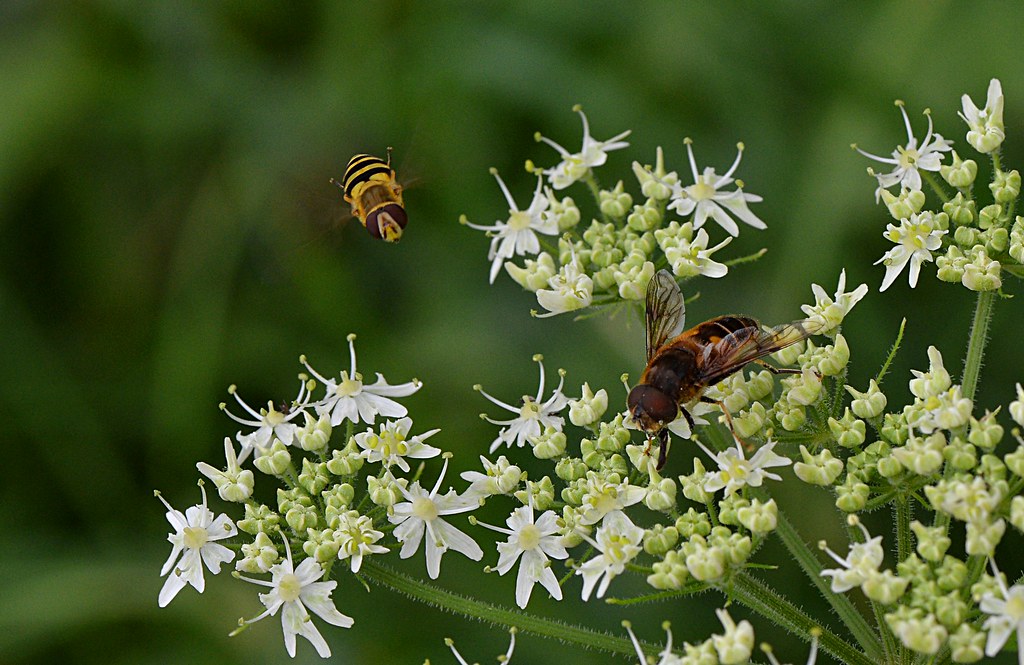Results 161 to 180 of 1723
Thread: Post your insects
-
2nd August 2011, 09:45 AM #161
Re: Post your insects
Last edited by Letrow; 2nd August 2011 at 11:01 AM.
-
2nd August 2011, 01:13 PM #162
Re: Post your insects
A couple super-macros I took this past weekend. Done using my Canon 100 f/2.8 at 1:1 and a 2x teleconverter to make it a 2:1 magnification...
Bee on Flower (I wanted to get more of its face, but this guy really was tucking in to this flower and this was the only time he held still enough was with his face half buried):
Fly on Flower:
I never knew this, but apparently bees and flies have 5 eyes. Two large compound eyes, and three simple eyes. You can see one of the simple eyes on the bee (reflection to the left of the large eye), but on the fly, you can see the whole cluster of 3 simple eyes between the two large compound eyes. Learn something new every day...
These shots are uncropped, and basically SOOC.
- Bill
-
2nd August 2011, 01:19 PM #163
-
2nd August 2011, 01:28 PM #164
-
2nd August 2011, 01:31 PM #165
-
2nd August 2011, 04:50 PM #166
-
2nd August 2011, 05:21 PM #167
-
2nd August 2011, 07:24 PM #168

- Join Date
- Jan 2009
- Location
- South Devon, UK
- Posts
- 14,646
Re: Post your insects
The only trouble with that Canon MP-E lens, apart from the price, is that it works something like a microscope and has a rather shallow depth of field. Although I have seen some stunning stacked images taken with one. But taken in studio conditions.
-
2nd August 2011, 07:27 PM #169
Re: Post your insects
Thanks,Peter.
All the shots in this thread have been outstanding.After dealing with some knees troubles I'm finally able to get out in the fields and do some work.Great inspiration here.
-
2nd August 2011, 07:32 PM #170

- Join Date
- Jan 2009
- Location
- South Devon, UK
- Posts
- 14,646
-
3rd August 2011, 08:04 AM #171
Re: Post your insects
Interesting species, I have just been reading up on them here. I am always surprised at the variety there is in flies.
-
3rd August 2011, 09:20 AM #172
-
3rd August 2011, 05:31 PM #173

- Join Date
- Jan 2009
- Location
- South Devon, UK
- Posts
- 14,646
Re: Post your insects
I recognise that bee, Damien. She's called Edna Flower.

OK, Sorry.
That is a useful site, Peter, I have used it before. But this is the complicated professional site http://www.diptera.info/photogallery.php?album_id=21 Not quite so 'user friendly' though.
I was considering Tenthredo scrophulariae for that sawfly identification, but they are a complicated family.
-
4th August 2011, 07:47 AM #174
-
4th August 2011, 09:50 PM #175

- Join Date
- Jan 2009
- Location
- South Devon, UK
- Posts
- 14,646
Re: Post your insects
On reflection, I think I have muddled my Sawflies, the previous one was probably Tenthredo arcuata.
This one looks more like Tenthredo scrophulariae.

These were somewhat more forceful and when they considered that I was getting too close they pulled back their wings and raised their bodies to face me out instead of running away.
If you didn't know they were harmless this would appear quite threatening.
-
4th August 2011, 09:55 PM #176
-
5th August 2011, 07:38 AM #177
-
6th August 2011, 05:52 PM #178
-
7th August 2011, 12:36 PM #179
-
7th August 2011, 03:38 PM #180

- Join Date
- Aug 2009
- Location
- Canada
- Posts
- 3,113
- Real Name
- Wendy
Re: Post your insects
Here are a couple shots of some Black Swallowtail caterpillars that I am watching in my garden. They are not good photographs but I thought I would share what I have learnt about these guys. I saw the butterflies earlier in the season, but never did manage to get a good shot of them.

This spring I planted Dill and Fennel with the intent of attracting Blue Swallowtails and i have been watching daily for the butterflies or the caterpillars. No luck so far with the Blues, but I have found these caterpillars in various stages. I've looked them up and they belong to the Black Swallowtail I saw earlier. Here is a link for the Black Swallowtail
http://en.wikipedia.org/wiki/Black_Swallowtail
Anyway, long story short, if you want to attract swallowtails, Dill and especially Fennel seem to be a sure fire way to get them there. I planted Fennel at my old place and I did have a black Swallowtail caterpillar there but my neighbours who shared the garden did not know what it was and they killed it. This is the second time I have planted Fennel and walla - Swallowtails again, and they like Dill too. Note though that these are host plants so if you plan to wait for the butterflies there probably won't be much left of the plant. They don't bother with anything else though so the rest of your plants are safe. I hope this time nothing human or otherwise gets to them.
#1. First Instar Caterpillar - So far there are 2 of these.
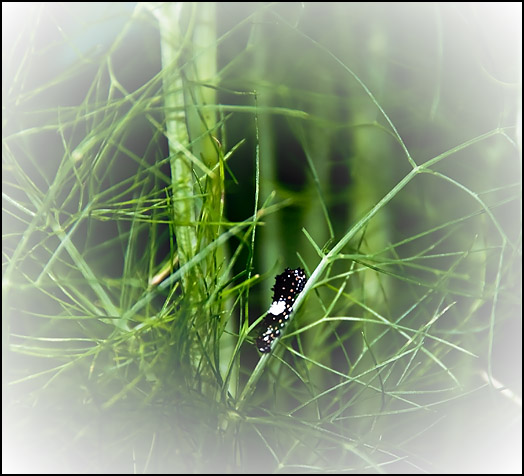
#2. Second third or fourth instar caterpillar. The shot is not clear enough to tell whether it still has spikes or not, but I can say that I have 1 caterpillar in late stages without the spikes and a couple others that still have the spikes. Read the link to find out about the different stages, that's where I found out. I just love photography, it's like going back to school. Even if the shots don't turn out I'm always learning and that's a good thing even though I probably knew this in grade 5 or thereabouts
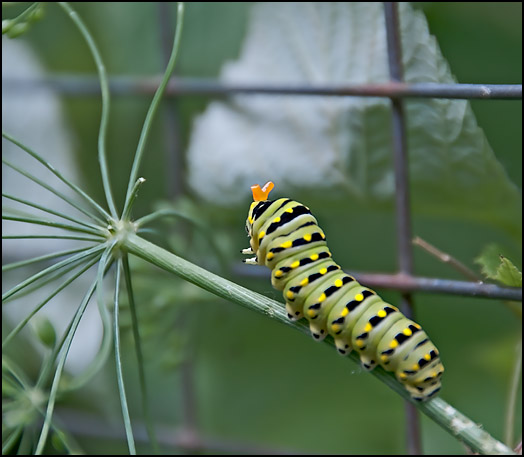
Wendy

 Helpful Posts:
Helpful Posts: 
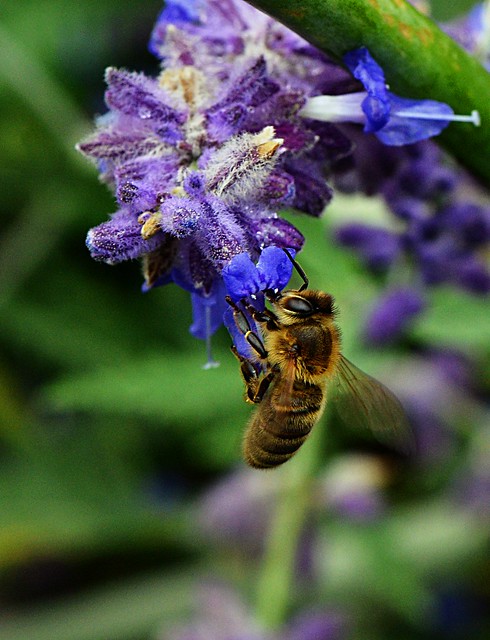
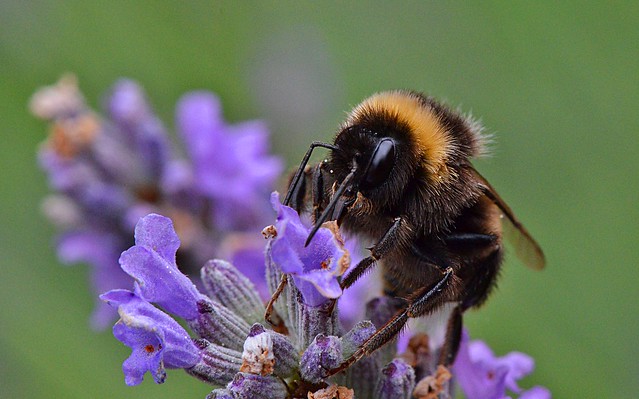

 Reply With Quote
Reply With Quote





